Brown trout are one of the most popular trout species worldwide, and can be found in many parts of the US. If you plan on fishing for brown trout, the first step is to find waters that hold brown trout. Check your state’s fisheries website for information on this subject. Trout is a highly regulated species and you should have no problem finding detailed information on what you can and cannot fish for. Check out our state by state fishing license tool to see what licenses you need and what rules you need to follow for trout in your state.
Finding Brown Trout in Streams & Rivers
In streams and rivers, begin your search looking for deep water. Some stretches may be too shallow to host any fish, yet alone a bigger brown. Look for the sections that aren’t easy to maneuver around because of the amount of water. If it looks too deep to wade—great. In sections that vary in depth, it’s often easier to locate these deeper spots where the brown trout may be hiding However, larger rivers often maintain vast sections of deeper depths. If this is the case, you should focus on finding structure within these sections and fishing the areas without structure more thoroughly from top to bottom.
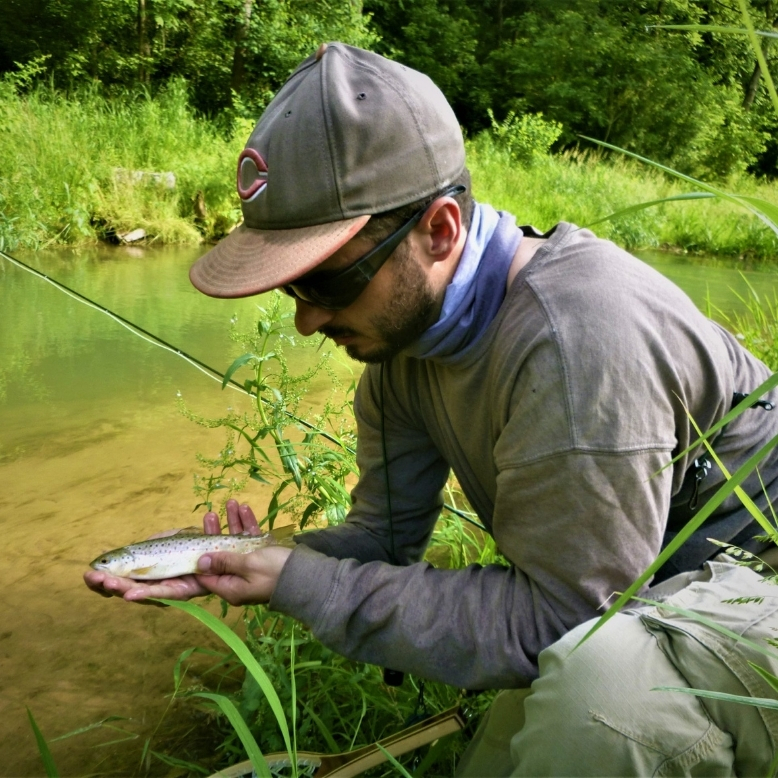
Wild Brown Trout Caught by the Author
Brown trout love structure, especially the larger ones who rely on it for staging and ambushing prey. Look for anything that breaks the current and forces the stream to move around it. Brown trout love to hide behind these structures—whatever they may be, such as rocks, trees, islands, bridge pilings, etc. Trout face into the current, so we recommend sneaking from behind to give you a good chance of getting close enough without it seeing you. For this reason, we recommend that you fish rivers and streams moving upstream. Likewise, cast upstream and retrieve your lure downstream. Prey that is an easy meal will rarely have the power to swim upstream. It is much more natural and effective to have the bait present itself moving with the current, passing right through where a brown is staging.
Finding Brown Trout in Lakes & Ponds
Brown trout can be found in healthy supply within many lakes throughout the country. These are typically stocked and you can often find them within 300 yards from shore. Usually open water brown trout are on the move in search of comfortable water conditions and bait. Water temperature in the 50s and low 60s is ideal, but not an exact science, especially in seasonal transition periods. During thaw-out in the spring, for example, the surface temperature will be warm enough in some shallow areas to attract bait, which can draw in hungry brown trout from deeper water. Under average conditions without ice, focus on fishing for brown trout in 20-40 ft of water. Locating structure at these depths such as sunken timber, rock piles, boulders, etc. can really hone you in and put you on trout. For a deeper dive, check out trout fishing in ponds and lakes.
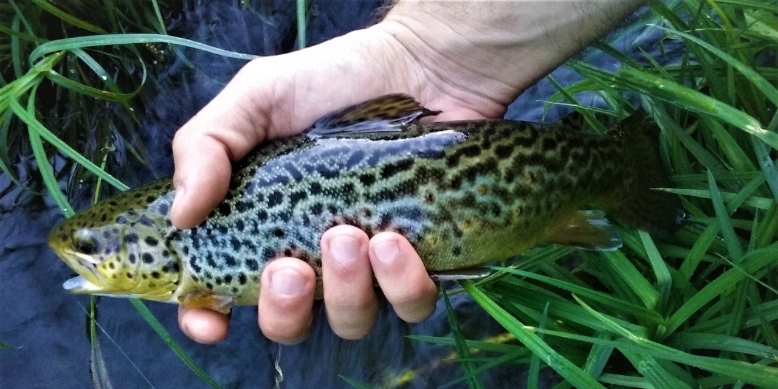
Brown Trout sporting Beautiful Colors caught by the Author
Brown Trout Rod & Reel
When it comes to preparing your gear for browns, it’s important to note that trout, especially wary brown trout, have keen eyesight and are very aware of their environment. If you plan on brown trout fishing in smaller streams and lakes, we recommend using 6lb test monofilament. Bigger browns tend to frequent nutrient fresh lakes. In bigger bodies of water, step up to 8lb test monofilament. Fishermen that specialize in trout fishing usually have specialized rods and reels; however, a simple multi-species rod and reel is a perfect rod for starting. It will let you target small and large brown trout as well as the other trout species such as rainbow trout. In general, you want a 35 (3500) size reel with a medium to medium light rod.
Brown Trout Bait
If you haven’t checked your state’s trout regulations and haven’t figured out where you’re fishing, do so before purchasing your baits. Many bodies of water have their own special regulations on baits. Many bodies of water in the western states prohibit live bait while many in the Midwest and East Coast allow it. Furthermore, some bodies of water maintain selective gear rules that restrict barbed hooks, treble hooks, multiple hooks etc. Different areas have different regulations. A single stream or river can have different regulations in different sections. You’ll need to distinguish the meaning of signs such as “Delayed Harvest”, “Artificial Lures Only”, and “Stocked Trout Waters” that can all be found along just one stream or river.
Natural Bait
The single best bait for brown trout fishing is arguably the earth worm. Dig up some dirt and see what you can find. Put it on a single or treble #8-12 hook, add split shot 1-2ft above the hook, and that’s as simple as trout fishing gets. If you aren’t close to a tackle shop and don’t feel like digging, check out our friends at Speedy Worm to order your bait overnight. Minnows, leeches, wax worms and crickets work as well. If the browns aren’t feeding off the bottom, rig up a trout slip float rig and try working your live bait in the middle and upper portions of the water column.
Working Live Bait for Browns
In areas with current, cast upstream and let it drift with the current as naturally as possible as if the bait drifted on its own. As you feel the split shot hit the bottom, it is your job to lift the rod tip up to keep it from getting stuck in between the rocks. The goal is to bounce on and off the bottom and let the current push the bait in a smooth, continuous drift. Once it’s downstream, or drifts past the spot your fishing, reel it in and repeat the drift. Since you’re letting the bait drift naturally, it’ll often take (many) multiple casts to get the bait to drift exactly how you want it to. A brown trout will notice something is wrong if your bait moves unnaturally in the water. Letting the bobber drift with current, or with wind on a lake, is much easier. However, bobbers can spook trout. There are always trade offs when it comes to trout fishing.
Artificial Bait
While brown trout are very susceptible to live worms, artificial plastic worms work very well too. On an aggressive bite, you can work them more efficiently and actually catch more fish than with live bait. When it comes to trout lures, inline spinners and 3”-5” crankbaits work very well brown trout fishing. While bright patterns can work, brown trout often favor simple, primary colors and patterns. Choose blacks to mimic leeches, whites/silvers to mimic baitfish, and browns to mimic the common sculpin and some insects. For inline spinners, plain gold is a classic color for good reason—it works very well. 1/8oz and 1/4oz are good sizes. For crankbaits, use a silver suspending crank bait in silver that can twitch in the water column while the current drifts it. These brown trout fishing lures are available in our trout fishing kit.
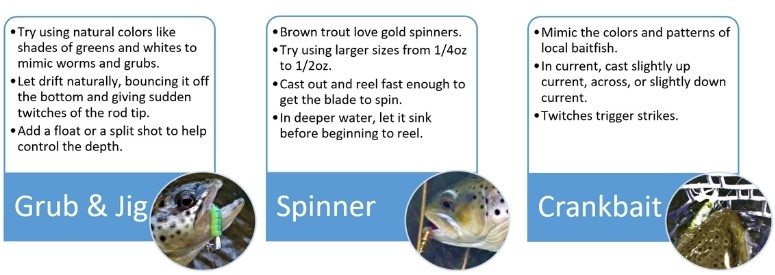
All Lure Types Discussed are Available in our Trout Fishing Kit


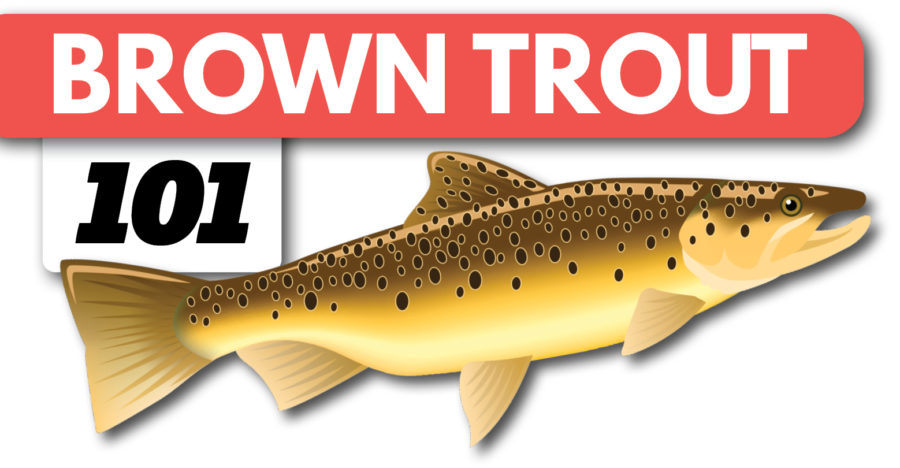
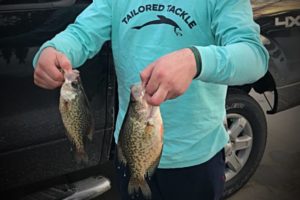
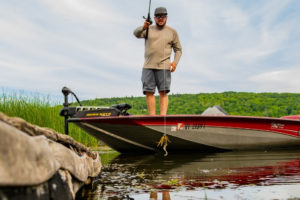
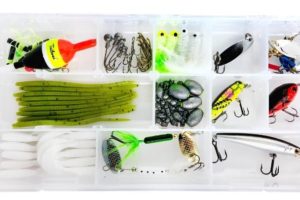
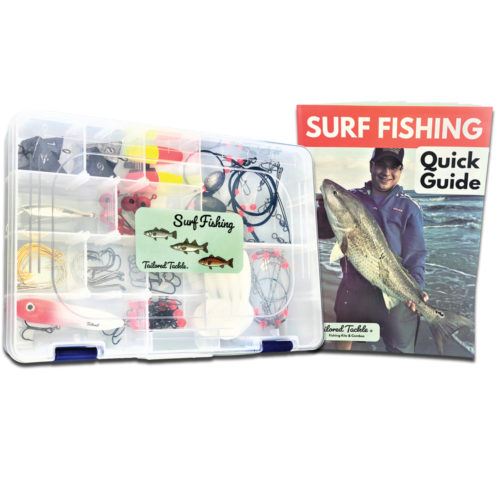
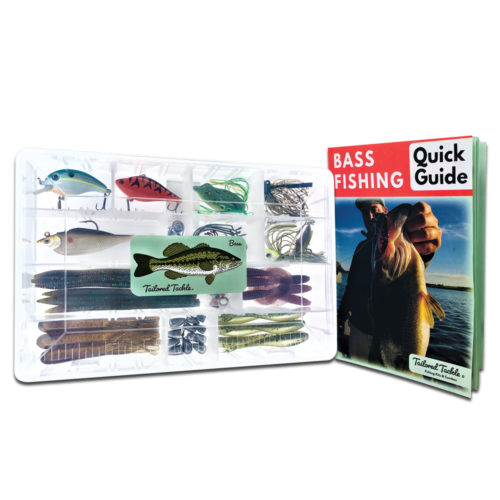



4 Comments
Leave your reply.